Evaluating R&S RTM 3K Oscilloscope Bandwidth and Rise time
This blog is in continuation from the Rohde & Schwarz Oscilloscope Kit RTM3K-COM4 - Review
Calculating the BW of R&S RTM
The generic rule is that the oscilloscope bandwidth should be at-least five times faster than the fastest signal to be measured in the system under test. This allows you to capture the fifth harmonic with minimum signal attenuation and determines the overall shape of the displayed signal.
An accurate way to measure is to determine the rise and fall times of the fastest signal in the system. And then calculate the maximum " practical" frequency component of this signal also known as the "knee" frequency. All fast edges have an infinite spectrum of frequency components. However, there is an inflection (or “knee”) in the frequency spectrum of fast edges where frequency components higher than fknee are insignificant in determining the shape of the signal.
Fig: Ref Book Johnson, Dr. Howard W. “High-speed Digital Design – A Handbook of Black Magic
After calculating the signal rise time with the above formula the oscilloscope Bandwidth can be chosen depending on the accuracy desired for the measurements.
Calculate the oscilloscope bandwidth and the signal measurement accuracy
Fig: Factors which determine the Oscilloscope BW and measurement
| Signal Rise time (10%-90%) | Fknee Signal | Scope BW with 20% timing Accuracy | Scope BW with 3% timing Accuracy |
|---|---|---|---|
| 100 ns | 500 MHz | 5MHz | 9.50 MHz |
| 1ns | 500 MHz | 500 MHz | 950 MHz |
| 500ps (RTM 3004 fastest vertical setting) | 1GHz | 1.0 GHz | 1.9 GHz |
| 100 ps | 5GHz | 5GHz | 9.5 GHz |
Fig: Theoretical calculations on how the signal rise time can be measured accurately
Here one can see that signals with 500 ps rise time can only be measured with low timing accuracy and the best accuracy measurement can be done maximum for a 1ns signal.
Fig: Rise time of different digital device ICs
Fig: Digital Protocol Rise times (Tr)
FFT functionality Tests with the R&S Signal Generator
In this setup an R&S signal generator was used to generate a sine wave and sweep across the full BW of the oscilloscope from 100MHz to the 1.5 GHz. And as mentioned in the theory blog one can clearly see that the signal starts to attenuate significantly as it nears the -3dB roll off edge.
Fig: Some measurements were taken with 10dBm attenuated signal
Fig: Test Setup of the RTM 3004 with the Signal Generator
Fig: Setup of RTM 3004 for FFT Measurement Sweep
Fig: Averaged Time Domain Measurement for 100MHz sine wave from signal generator
Fig: FFT Measurement Sweep at 100 MHz at 10dBm
Fig: FFT Measurement Sweep at 100 MHz Veff Vertical scale
Fig: Averaged Time Domain Measurement Signal for 500MHz sine wave from signal generator
Fig: FFT Measurement Sweep at 500 MHz at 0dBm
Fig: FFT Measurement Sweep at 714 MHz at 0dBm
Fig: Time Domain Measurement for 1GHz sine wave from signal generator
Fig: FFT Measurement Sweep at 1GHz at 0dBm
Fig: FFT Measurement Sweep at 1GHz Closer look at the attenuation
Fig: FFT Measurement Sweep at 1GHz Closer look at the attenuation
Fig: FFT Measurement Sweep at 1.2GHz Closer look at the attenuation
In the measurements above one can clearly see that the amplitude attenuation starts at a frequency shortly after 714 MHz for the input sine signal. And at 1 GHz the signal attenuation has reached -1.8dBm and starts to move towards the -3dBm attenuation at frequencies higher than 1GHz (as can be seen below).
Fig: Chasing the -3dB roll off Attenuation in the signal at the edge of bandwidth
Fig: -3dB Attenuation is reached at little after 1.1GHz
Hence it can be concluded that the RTM 3004 performs better than its specifications as the -3dB roll off occurs after the oscilloscope bandwidth limit is reached and not before as is the case with many low range oscilloscopes.
Evaluating the fastest Rise time (tr) of R&S RTM 3004
The rise time measurements as published by Keysight for their 1GHz range of oscilloscope Ref. The aim of the upcoming tests is to verify rise time for R&S RTM 3004 oscilloscope.
Fig: Response of 1 GHz Keysight oscilloscopes
In this setup a very fast 20ps signal was input to the RTM 3004 channel 1 set to maximum 5GSa/s sampling rate from a sampling oscilloscope. A sampling oscilloscope is characterized by an architecture which samples the input signal before amplification or attenuation. These scopes have much higher bandwidth than normal oscilloscopes but have a lower input dynamic range and a lower safe input voltage.
Fig: Basics how a Sampling Scope works
A special 50 ohm highly insulated cable (as short as possible) was used to make the connection between the devices.
The experimental test setup
Fig: Test Setup of the RTM 3004 with the Sampling oscilloscope
Fig: Specifications and Setup of the 27 ps fast input signal
Fig: The fastest edge that the RTM 3004 can measure is 345ps
Fig: Averaging The fastest edge that the RTM 3004 can measure 325 ps
Fig: The fastest edge the 8GHz Lecroy could measure is 68 ps
Hence one can conclude that the fastest signal the R&S RTM 3004 can measure is in the range of 320ps therefore performing better in the 1GHz bandwidth range and stretches the bandwidth upto 1.09375 GHz but with 20% timing accuracy(or less even).


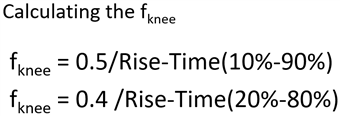


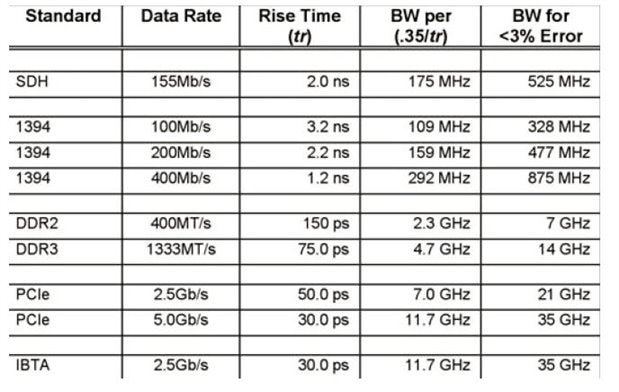

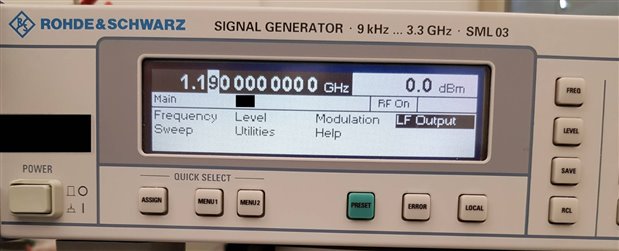
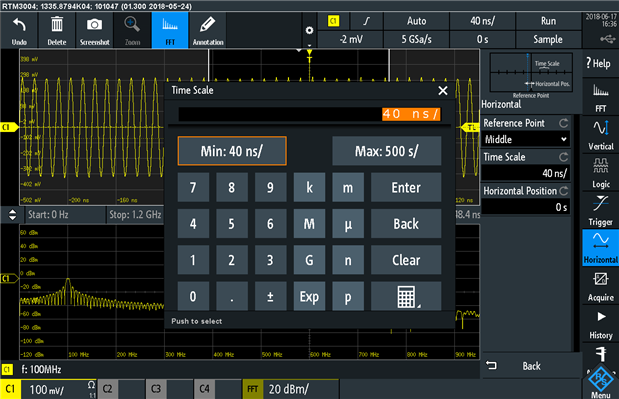

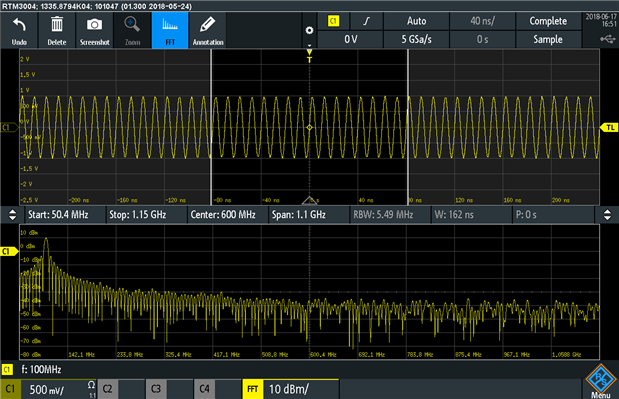
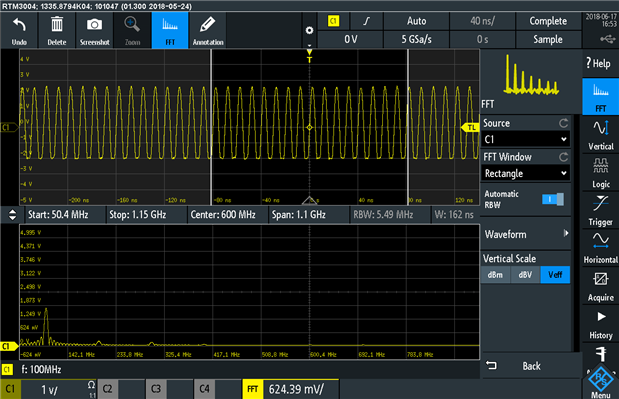

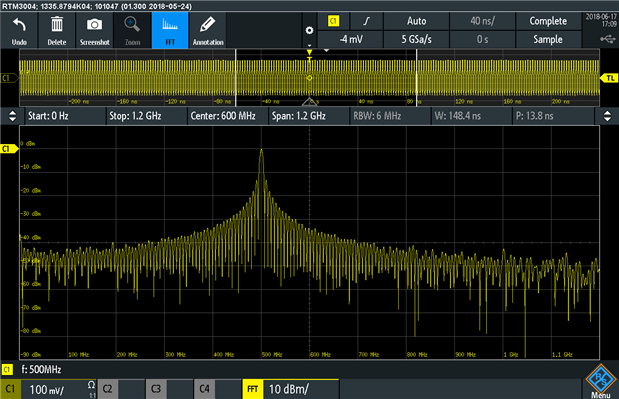


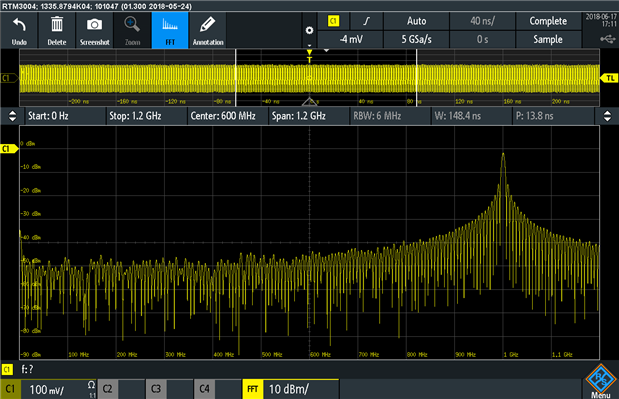
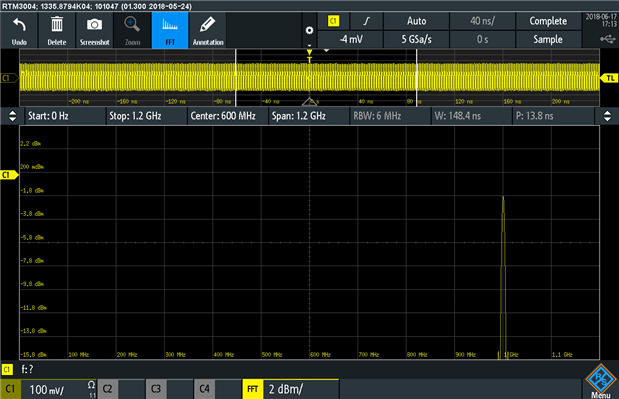
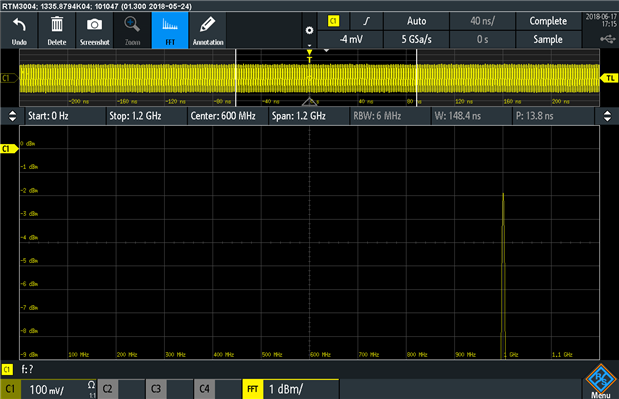


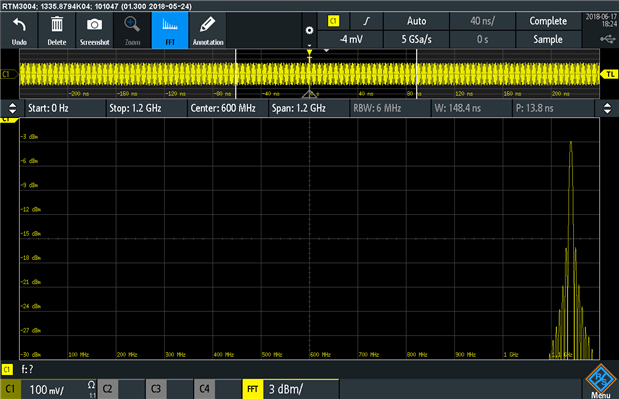
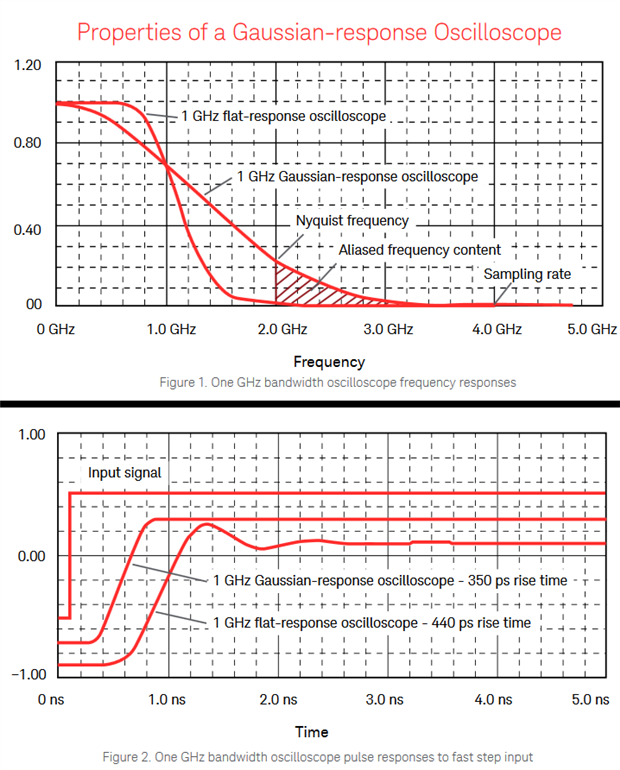


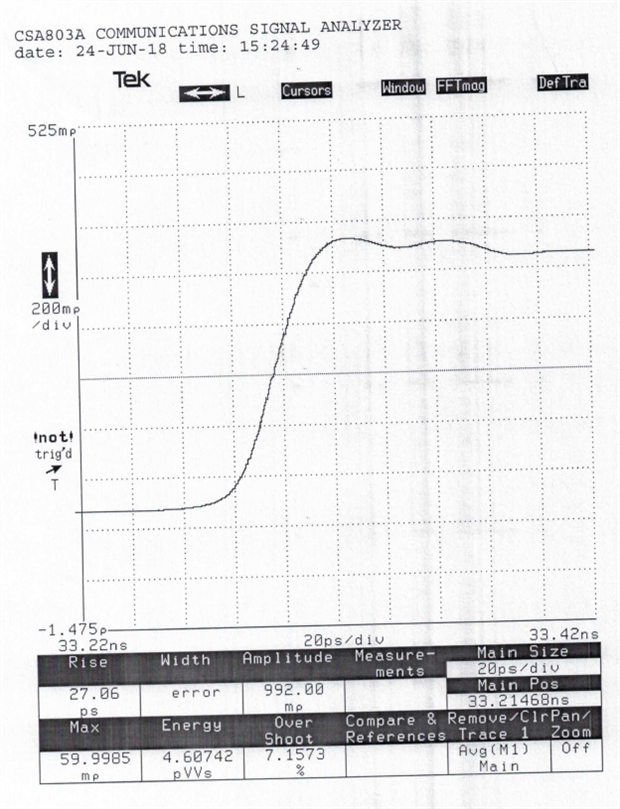
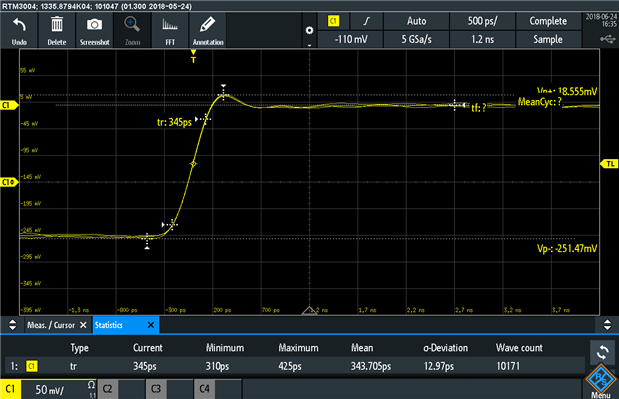
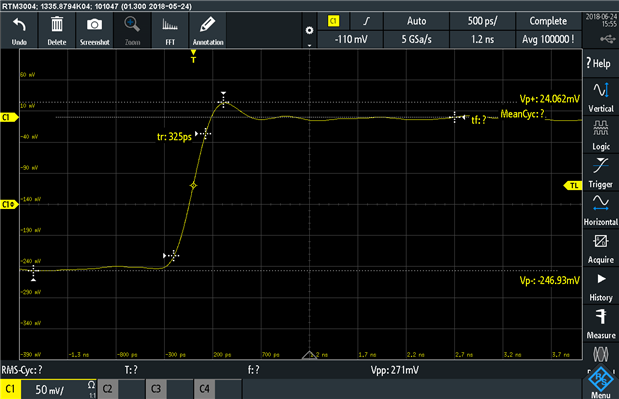
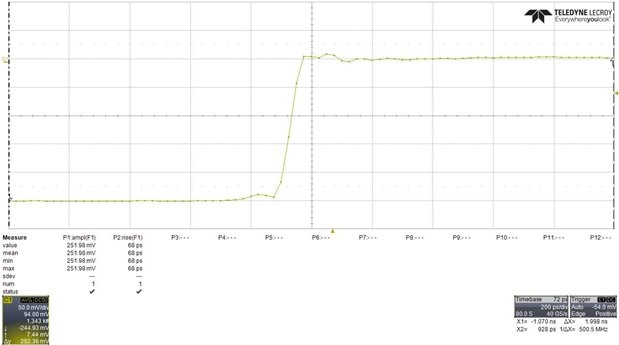
Top Comments